More Traffic, Less Money: 13 Tactics to Build Inbound Links for Your Online Store

Do you want more traffic, more trust and more sales for less ad spend?
Of course you do. That’s the goal of every single online business – whether you are a brand-new startup, just launching the online version to your brick-and-mortar or a scaling $1M+ business that has plateaued.
Here’s how you do those 3 things without ad spend:
To get more traffic, you need to rank higher in search engines
To get more trust, you need to produce free, valuable information
To get more sales, you need more people recommending you over your competitors.
What’s the one thing that knocks all three of those birds out with one stone?
Link building.
Why is link building the silver bullet here? For a few reasons.
Google valuably weighs links back to your website from quality sites in your niche. This means the more you can get, the faster Google recognizes your site as reputable and trustworthy, and puts you closer to the top on keyword searches for your niche. We’re talking about organic traffic here.
The fastest way to get those quality sites to link back to your site is to produce valuable, free, informative content that offers advice, tips, suggestions and ideas within your niche that no one else is producing, or that you are producing 10x better. This drives increased SEO through link backs, but also gives you valuable information to share across the web to earn trust with net new customers long before they purchase from you.
And as that trust builds in your content, you’ll begin to build a network of influencers who trust your work, want to work with you and ultimately understand your goals and needs. These folks will link back to you more readily, recommend your products over others and ultimately contribute to your bottom line revenue through word of mouth marketing.
All three of these tactics build upon one another – and are the basis for any good link back strategy. It’s about building a network of people who create invaluable content across the web for a niche, and then working within that community to reach mutual goals.
This is how you grow your audience for free. It takes work, surely, but the payoff is massive.
But first, before we dive in to specific tactics to make this work for your business, let’s start here:
Why is link building important for a website?
Since PageRank was first developed and introduced by Larry Page more than 20 years ago, Google has evaluated the quality of websites and online pages not only on account of their content but also for the number of inbound links, or backlinks, they received.
The more inbound links a website receives, the higher it ranks in Google search.
This is how the most popular search engine determines the quality of a website.
However, Google does not count the links to your website only. The algorithm focuses heavily on link quality rather than quantity. This means that earning high quality backlinks from sites with high domain ratings in your niche vertical are much more effective in increasing your organic search results than nearly anything else.
Earning link backs from a large number of low quality, low domain rating sites that have nothing to do with your industry can in fact hurt your SEO.
You need a strategy to earn you those inbound links from high quality sites. In fact, to make this work, you’ll need two things:
High quality content
An ever-growing network of supporters
How you create and build those two things are up to you, but the following 13 steps will help you get you started, give you ideas and begin earning you more traffic, more trust and ultimately more sales for less ad spend.
Let’s dive in.
How to generate inbound links for your ecommerce website
First, not all the following options are suitable for all websites. Some will work better than others, but ultimately for link building, you need to create yourself a network, talk to people, work with people, build value, show off your expertise and ultimately share it with the world.
The following tactics include some immediate low-hanging fruit to tackle now – and then longer-term tactics that will take you longer to build, but once you have them in motion, will be the best source of ongoing inbound links for your brand.
1. Ask for specific links from your suppliers
If you are managing an ecommerce website, chances are that you have several products in your shop that are produced by different companies.
Maybe you already have a good business relationship with the producers. Maybe you are relying only on third party distributors. However your relationship may be, contact the producers and ask them to link back to you.
Most of these companies already have dedicated web pages for suppliers and therefore it won’t be much of an effort for them to include your website on their list.
Phone them or email them and ask them to include your ecommerce website on their list of vendors. You are important to them, and it is most likely that they will not refuse your request.
Here’s a good example of a producer linking back to the vendors on Tabitha Simmons’ official website:
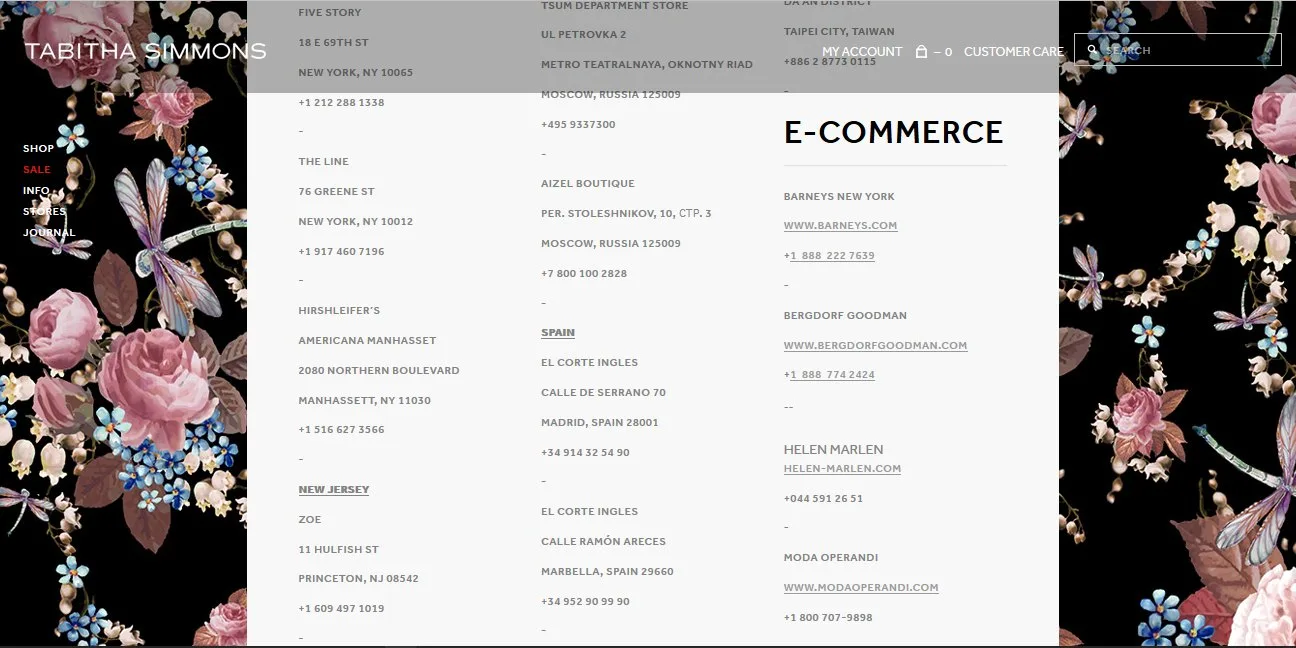
Some websites use lists of vendors and links to their websites, while others are promoting them with specific-sized banners that link back to the respective websites. In the worst-case scenario, you will need a banner to send to the producers to insert it on their vendors’ page.
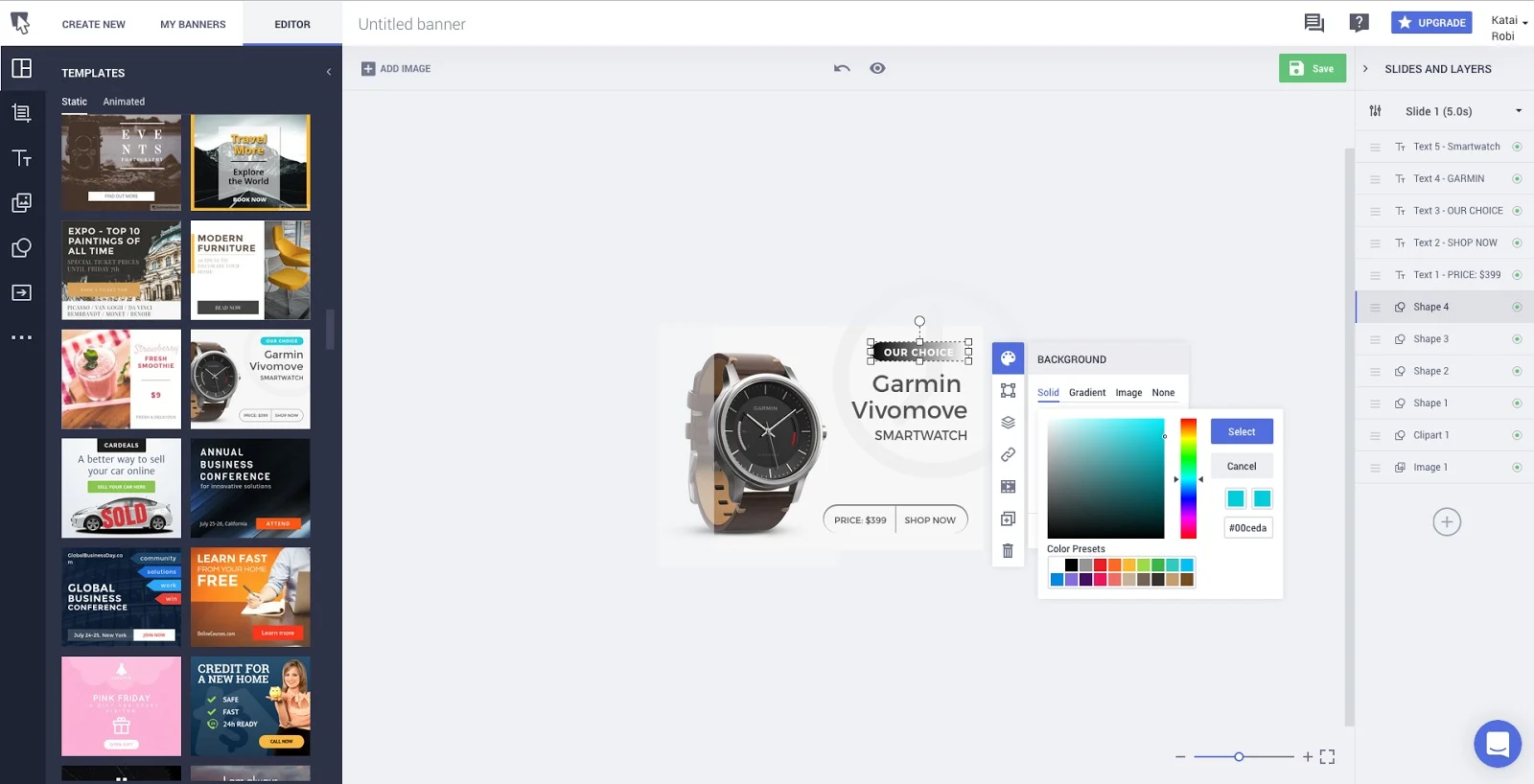
There are several programs you can use for designing and saving a banner. I recommend Bannersnack because it’s easy to use, most of all, and it is available online, so you don’t need to install a third party software.
Bannersnack has an easy learning curve so, in just a matter of minutes, you’ll be ready to design your banner with not much of an effort. Time is money, after all.
You need the best tools in order to do your tasks professionally and fast.
2. Find complementary products or services
Think about the products you are selling and think through which other companies are selling complementary products or products that enhance yours. Reach out to the manufacturer of these products and ask them to collaborate with you.
You can exchange links with shops or producers that sell complementary products or publish articles and blog posts that link back to each other’s products.
One of the best examples I can think of in this case is that of Paul Mitchell’s, who wrote about the benefits of lavender, a scent available for their products.
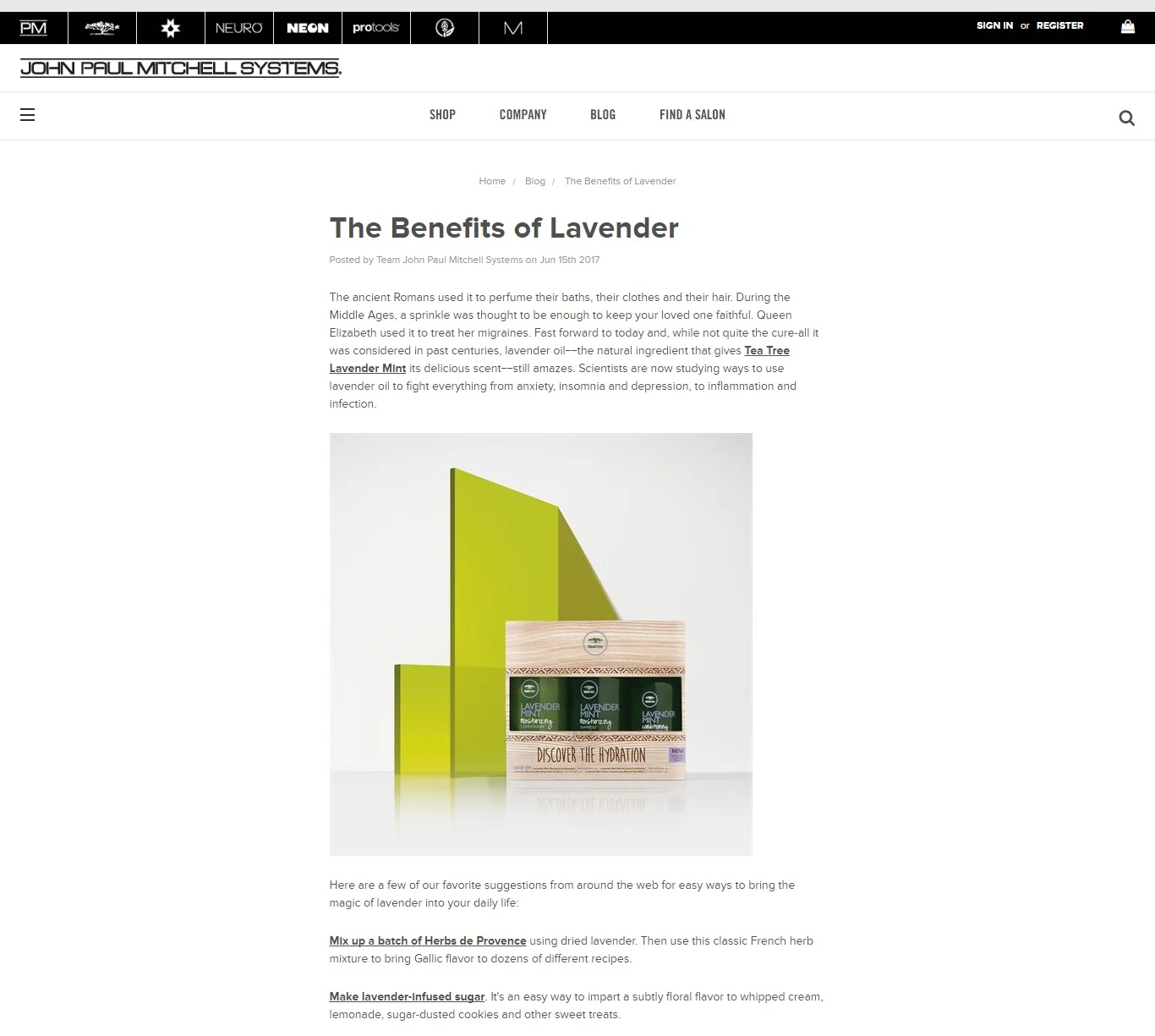
It is a perfect example of content marketing for Paul Mitchell’s website, which has a valuable information for their customers regarding the best way to use lavender in other situations.
At the same time, the websites referred to on this article get exposure and inbound links through the Paul Mitchell blog, which likely has higher domain rating for its niche – making any links back to a site from this site more valuable than ones that aren’t as reputable for a specific topic.
3. Get inbound links through content marketing
There are many ecommerce websites that rely solely on the products they sell, but if you want to attract more customers, you should give something back to them.
Content marketing is the perfect marketing tool in this case. It’s cheap or even free and it is almost always effective.
“We need to produce content that naturally earns links and content that’s likely to earn links once we do the right kinds of outreach.” – Rand Fishkin
Create a blog on the same domain name as your online shop and start publishing valuable articles for your readers. The Paul Mitchell example is perfect for getting a baseline understanding of what content marketing is.
To sum it up, it is your brand offering free, quality advice on your niche – helping you to earn increased trust from consumers, more traffic from Google searchers and ideally more conversion through plain good advice.
Ben & Jerry’s also gives us a great example of content marketing. They are in the ice cream selling business, and on their blog, they try to give valuable advice and recipes to their customers.
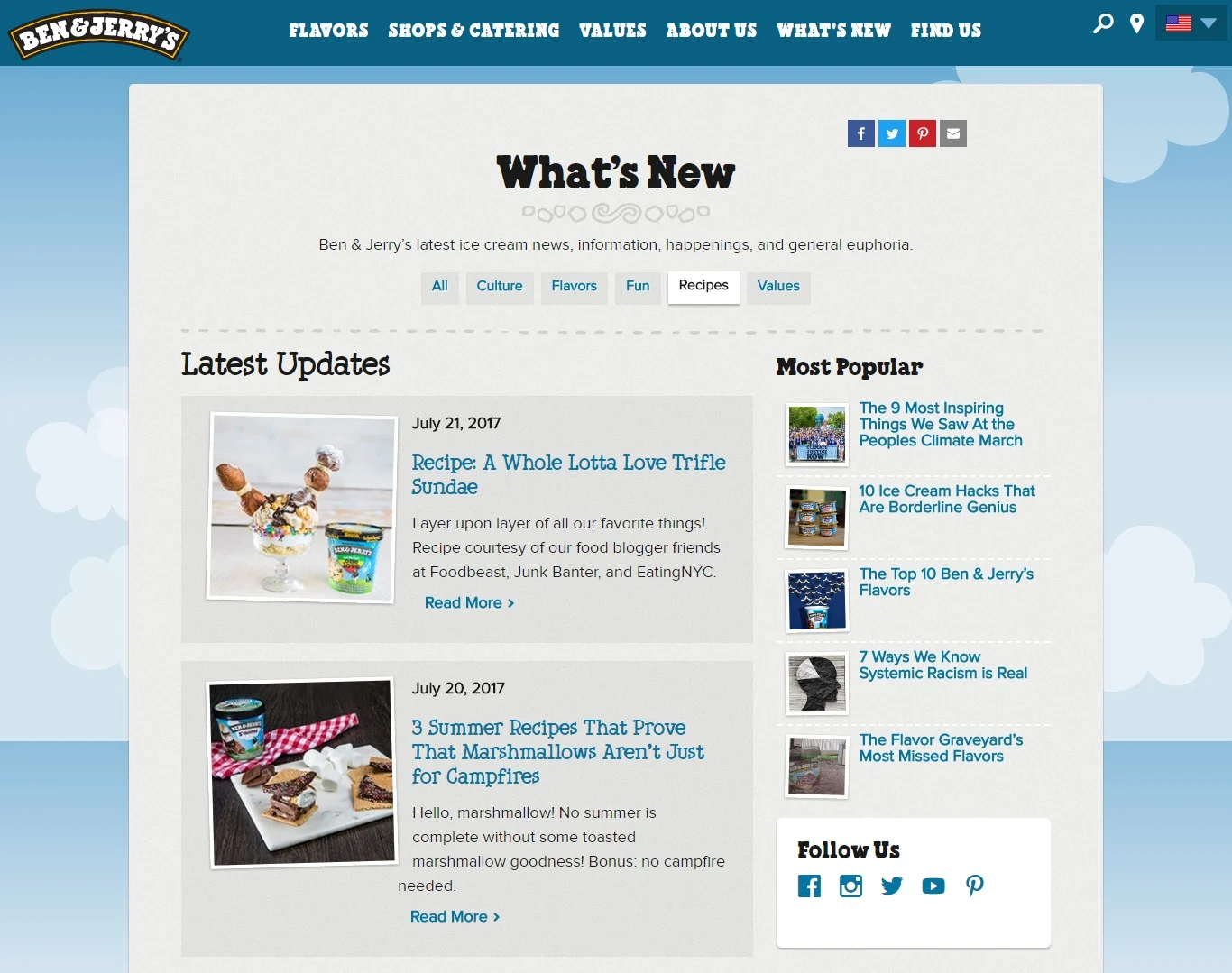
Pro Tip
Don’t install a blog only to write reviews to your own products. Your customers are looking for information related or complementary to your line of work. You can let them review your items in the shop section and use the blog only to publish great, valuable, evergreen content. Your content is your chance to offer your audience free value in the form of your expertise.
How to make your content more attractive to your customers and readers:
Here are the 7 points you should check out if you want to create awesome content for your readers:
Make sure you have something of value to write about. Nobody will read or cite your articles if they are not interesting or informative.
Don’t post large chunks of text. Segment your articles as much as possible. Otherwise you might scare your readers away.
Be succinct and make your posts easy to understand.
Use appropriate fonts, headers, sub-headers and actionable tips in order to make the text easier to read and more attractive as well.
Always check your content more than once for errors, misspells and other grammar mistakes. If you want your post to be cited by others and get inbound links, you have to make sure the text is professionally written. You don’t want to come off as negligent or lazy.
Provide articles in different languages if your ecommerce website addresses a worldwide audience. You might score some points with your foreign customers and potential foreign customers as well – and you’ll earn link backs from quality sites within those region, increasing your Google ranking for your international audience.
Should you publish podcasts, choose a spokesperson with perfect diction, a friendly voice tonality and equip yourself with proper gear in order to be able to record sound at high standards. Audio marketing is getting bigger and bigger. According to Google, 20% of mobile queries are voice searches.
4. Create infographics and publish them online
Infographics are only effective if you have something really valuable to share, and at the same time, you have the skills and visual artistic drive to make them look good and attractive.
That said, there are tons of online resources where you can work directly with designers to build out infographics specific to your brand. 99Designs and UpWork are two examples.
Visual content is a great way to attract visitors and get inbound links. This is especially true today, when YouTube, Pinterest and Instagram are growing at a rapid pace as more and more people are migrating from text-based websites to visual content websites.
Pro Tip
Do keep in mind which channels you’ll want to share your infographic on – and make sure you create the appropriate sizes for each. An experienced designer should be able to do this for you relatively easily, creating various cuts of the graphic as needed.
Take for example Spinning.com, an online shop that sells fitness bikes, equipment and other accessories. They managed to create an infographic about their global operations, which helps users find out more about their services and where to find them.
A post shared by Spinning (@spinninghq) on Nov 17, 2016 at 1:58pm PST
On the other hand, you can just create a simple infographic that shows how your products work and what benefits can be gained from using them. Here’s an example from Sharp USA:
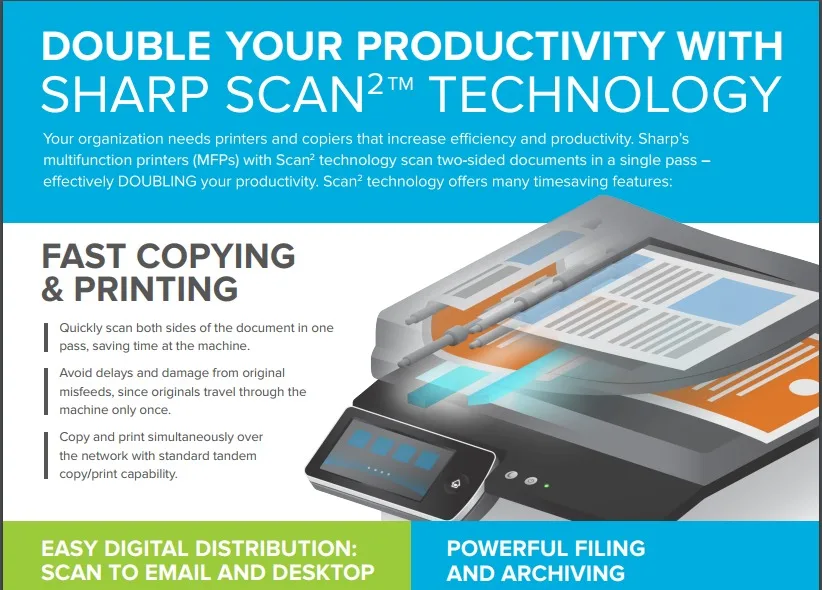
Here’s another from Annesley Surboards:
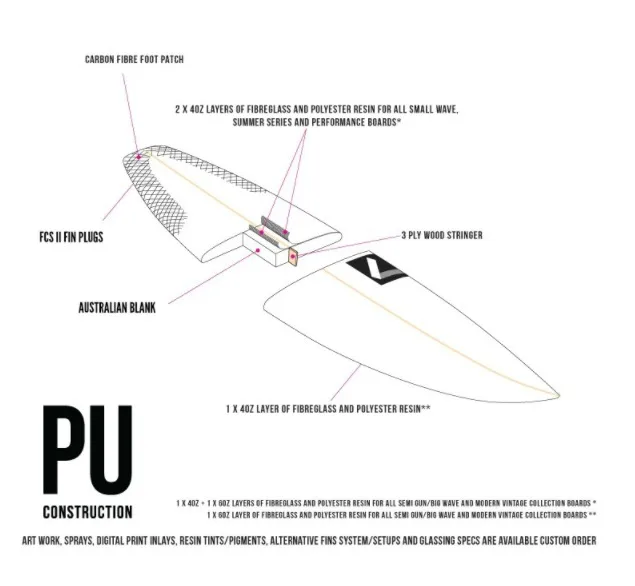
And another from SoloStove:
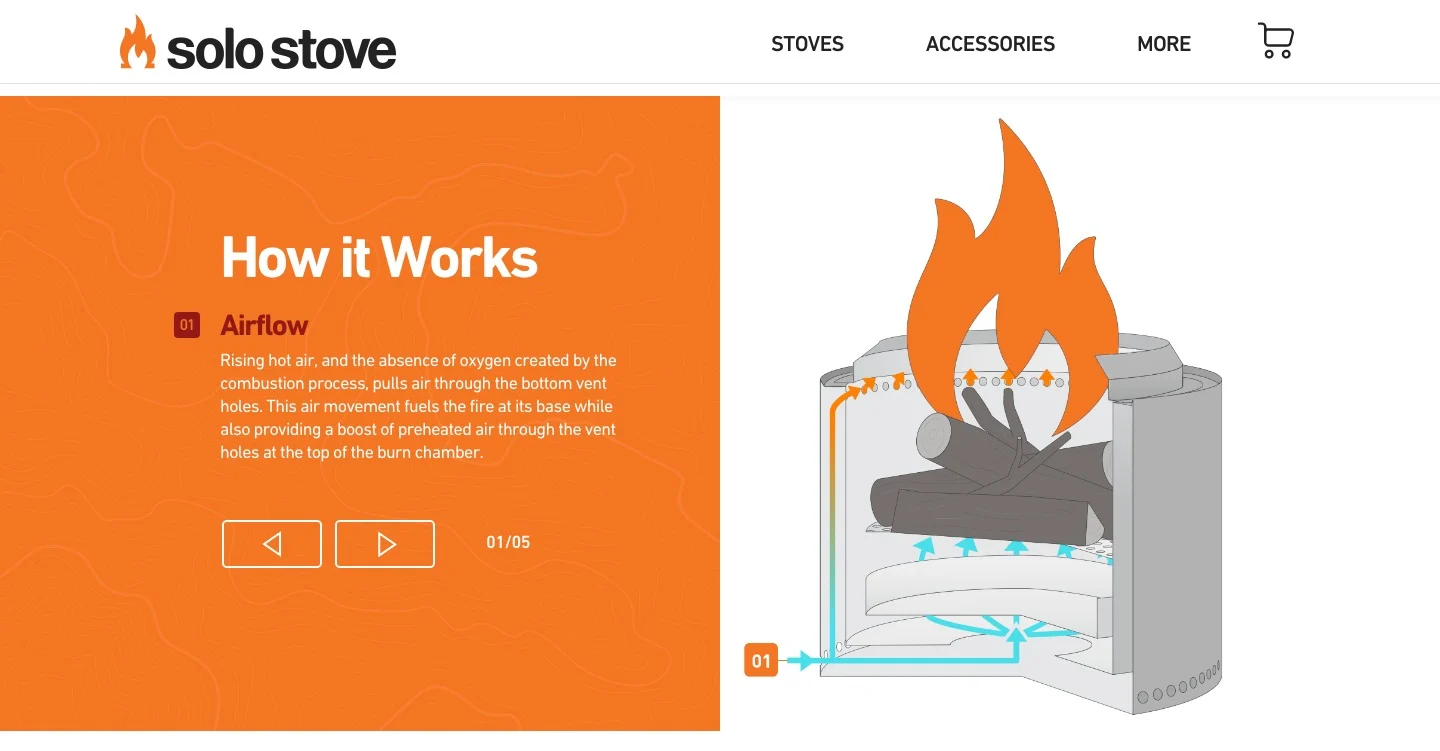
5. Use the power of Meta
Social media in general, and especially Meta’s social commerce platform Facebook and Instagram in particular, in particular, often proves to be one of the best sources of inbound links, but only if you are constantly engaged in an open dialogue with your customers and have something to offer – for instance, free, valuable content or a great product. Ideally, you offer both.
Everybody likes pictures of cats and dogs, and maybe an occasional quote from an important historical figure, but if you want to really attract your customers and followers, you have to think like a consumer and not like a vendor.
So, what’s your best approach to Facebook and Instagram marketing, keeping in mind your goal of earning links back?
Influencer marketing.
Start here with building your network. Reach out to influencers in your space – i.e. people who your target audience already follows, listens to and trusts – and send them some of your content and your product. Work with them to get feedback, and offer their audience unique coupons or discounts.
The benefit to offering unique coupons and discounts is being able to measure on your end which influencers have the most traffic-driving and conversion power. You can create individual coupon and discount codes on the backend of your BigCommerce site, like Tinitell does, to measure the overall impact of your work with influencers.
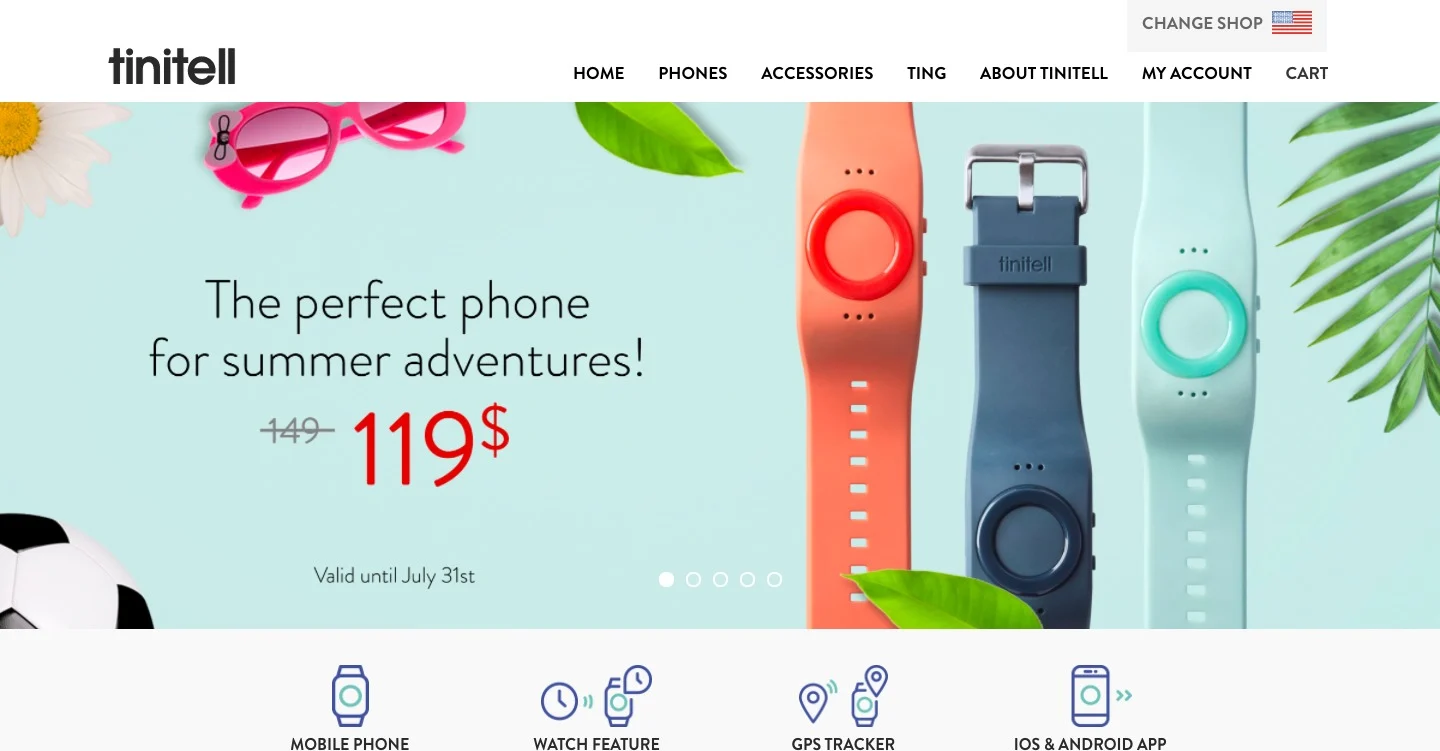
That said, with the goal of earning links back, you can also use the BigCommerce Buy Button‘s link option to allow influencers to link back to your site for certain discounts off products. You can input UTM codes and Google Tracking Tags in order to understand which influencer content is performing best. You BigCommerce backend will also automatically measure this for you.
Test it out below. Go to Button Type > Link. You’ll get a preview of what you’ll be able to send to your influencers, and even maintain a bit of control over that influencer’s audience’s UX on your own site.
6. Research your competitors
Find your competitors and other local companies that are active in complementary industries and research their inbound links stats.
Create an Excel document and write down all their website links and export the document as a .csv file. After that you can find out who is linking back to them through online tools such as Ahrefs.

Build Your Network
Some of the inbound links of your competitors will be unobtainable, but the sites that link back to them should be the sites on the top of your list to get to know well. Reach out to their editors and owners. Share your content. Ask for their feedback and ultimately build a relationship.
This is a longer-term play, but as you build a relationship with these folks, they’ll begin to include you alongside your competitor and even begin to link to your content without you having to do much work. Better yet, as you share business goals and needs, you’ll likely be able to work with these folks to help each other build higher domain ratings and organic search visibility.
Everyone needs links back, after all. And the best way to get them is to network with like-minded folks and build a community of trust, with everyone helping one another build toward their goal.
Know What to Write
Beyond this, tools like Ahrefs also help you to understand what content and keywords are generating links back for your competitors. You’ll likely want to create similar content to theirs, ideally content that go above and beyond what they wrote. For instance, if they wrote a piece about “The Best Fishing and Lures On the Web” >> you’ll want to create something similar that lists more, adds in advice from influencers and ultimately creates a piece that is 10x theirs.
This will help to drive increased traffic, and earn you trust and links back from your customers and influencers.
7. Get profile links
There are several web sites and communities available online on which you can sign up and create profile pages that link back to your ecommerce shop. Some of them will be of no use to you, by giving no-follow links.
Try to find some groups and communities related to your industry. If you can find a powerful community of this sort, you can get valuable inbound links from them.
If you cannot find a niche group, however, you can start by creating a profile on Crunchbase or other similar directories with similar profiles.
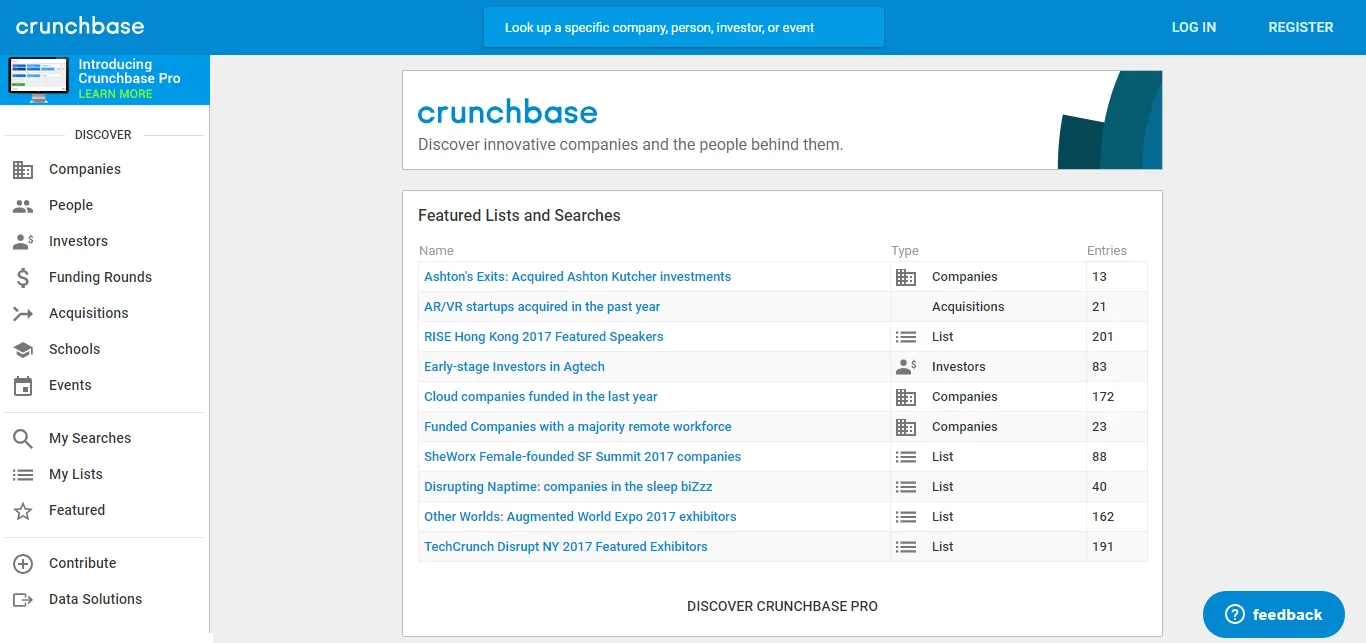
Recommended Reading
Are you active on Quora or Reddit? These niche communities are passionate, loyal and love great advice from seasoned experts. If this is you, sign on up and start contributing. Depending on your vertical and your strategy (i.e. don’t pitch your product here), you can turn these channels into new streams of revenue. Learn more here.
8. Sponsorship links
If your budget is big enough, you can try to sponsor events in order to attract links to your website. You can also work with schools and colleges and offer promotions or sponsorships to their students and attract links from .edu websites as well.
One really great way some brands earn .edu links (which Google’s algorithm consider super high quality) is by launching an ambassador program.
What is an ambassador program?
Ambassador programs are programs generally targeted toward college students. The students will get free product from your brand, often in exchange for word-of-mouth marketing and social media posts. Many ambassador programs have weekly or monthly challenges to keep the community involved and actively posting.
Schools will often post these opportunities on their pages to raise awareness for students. It’s a win-win for you. You get a link back to your Ambassador Program landing page (you can create this via a web page on your BigCommerce site), and you’ll begin to build your ambassador network.
9. Link out to other websites
No one likes an inbound link hoarder. Because link building is both a tactical strategy as well as a networking philosophy, it’s important that you give links to others when asked, or even as a freebie.
Again, everyone needs inbound links to increase their SEO. Don’t hoard yours. If you see content you like that is relevant to your audience, include it on one of your blogs. Is something particularly helpful for your industry? Write about it and link back to it!
Reach out to these folks too. Let them know their content and effort inspired you, and that you’ve shared it with your audience. This is a great way to find new folks to bring into your niche community and with whom you can ultimately grow your business.
10. Generate internal links
If you are managing an ecommerce website, chances are that some of your best keywords and content are not on your main page but under the categories section or even on specific product pages. Link back to these!
For instance, you can add a featured category on your main page that will link back your most valuable products and articles.
Why is this important? Because internal links help the Google bots understand how to read your site, helps determine which content on your own site you think is important and helps to establish cornerstone content (i.e. content that ranks highly for its depth, value and links).
This is web architecture 101. If you don’t want to build roads to your own towns, why would any one else? And why would Google recommend anyone go there? Make your content beautiful, great and easily findable.
Also, if you are using a CMS, you can use an internal linking plugin that will automatically highlight and link back specific words and expressions, similar to what you see on Wikipedia. Internal Links Generator for WordPress does exactly what its name suggests.
You can use this plugin or search for similar plugins according to your needs.
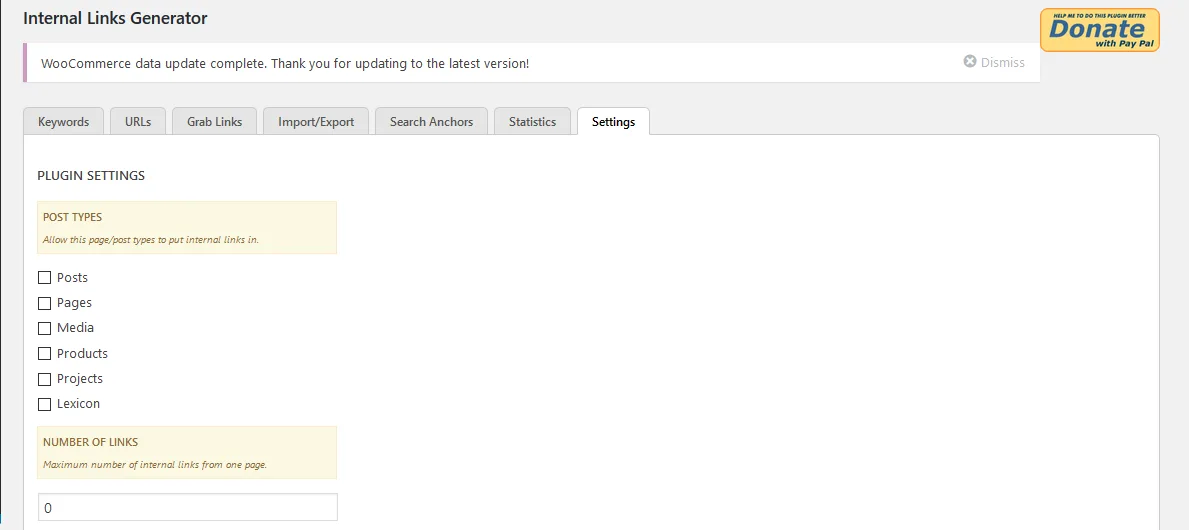
11. Submit press releases
Every time you have a new contest, a sponsorship deal or premium products available on your ecommerce website, you can distribute press releases to dedicated directories and agencies. You will get at least an inbound link from them but you can get more links from people who publish your press releases on their websites.
There are several distribution sites available to choose from. I recommend PRNewsWire.com, a premium and popular service.
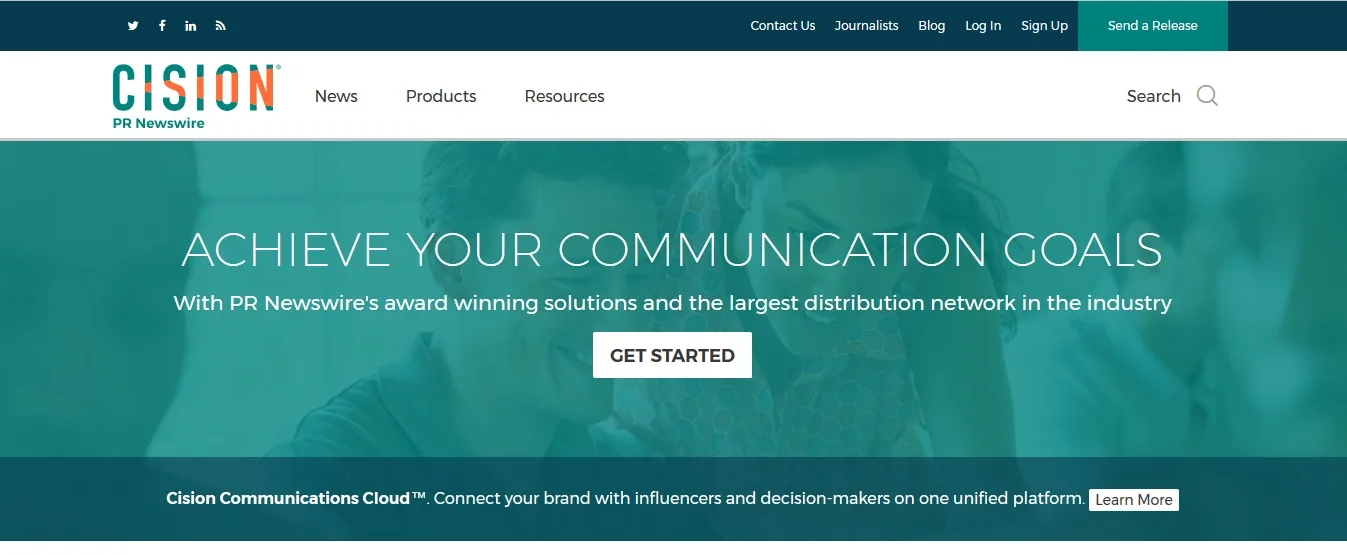
12. Subscribe and submit your links to niche web directories
Another great way to get inbound links that are both meaningful and effective is to subscribe to niche directories that are listing specific companies that sell products similar to what you are selling on your ecommerce website, or complementary products.
Take, for example, Apparel Search, a directory that lists links for clothing stores, or Wedding Wire, with listings from wedding-related industries, stores and services.
Almost all niches have directories like this. Use Google to find yours and reach out to figure out how you can get your site listed.
13. Create and submit guides and e-books to specific sites
E-books, guides and presentations are a great source of content marketing. You can include your links inside their pages and attract more customers if you are giving them out for free.
Plus, this gives you amazing content to share on social media and around the web. Ultimately, content marketing is about creating free value that earns you respect and trust from your niche audience. Otherwise, why would they buy from you? It’s about educating folks, and helping them to understand your differences (i.e., you aren’t just in this to make money. You are passionate. You care. You know a whole lot!).
You can benefit from these documents not only by making them available on your website, but also sharing them on sites like SlideShare or Scribd.
Think about how big SlideShare’s community is:
80 million professionals are using SlideShare
18 million uploads in 40 content categories
One of the top 100-most visited websites in the world
Did It found out that SlideShare gets about 500% more traffic from business owners than Facebook, Twitter, or YouTube. This makes it a great platform for B2B businesses looking to increase visibility with their target market.
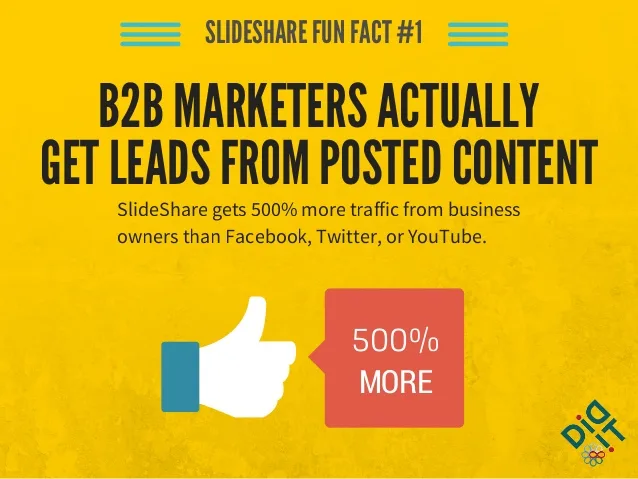
Final word
Link building is important for any website, especially for ecommerce shops that were launched recently and need to attract customers. There is no easy or hard way to generate inbound links, and there is no perfect method either.
At the end of the day, link building is about building a network and a solid base of quality content that offers value to the world – specifically your industry.
This value is what attracts not just customers and influencers to your site, but also what signals to Google that you are a serious brand with in-depth knowledge on a topic relevant to consumers.
This is how you build a base that ultimately allows you spend less on advertising and more on customer happiness, networking and growth.

Robert is a visual marketer and content strategist at Bannersnack, a professional banner creation app for marketers & small business owners. He's passionate about visual marketing, Instagram marketing and content marketing. His work has been featured in The Next Web, AdWeek and The Content Marketing Institute.


